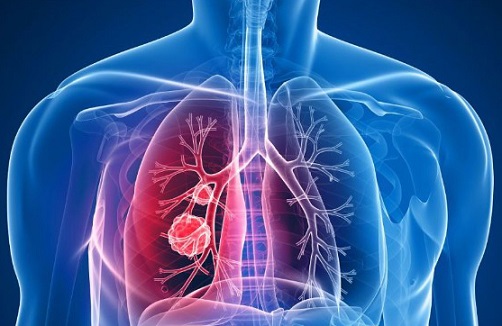Nikhil Prasad Fact checked by:Thailand Medical News Team Jun 12, 2024 1 year, 6 months, 5 days, 10 hours, 25 minutes ago
Cancer News: Lung cancer continues to be a formidable health challenge, claiming more lives annually than any other form of cancer. Among its various types, lung adenocarcinoma (LUAD) is particularly prevalent, accounting for a significant percentage of non-small cell lung cancer (NSCLC) cases. Despite advances in early detection and targeted therapy, the five-year survival rate for LUAD patients remains dismally low. Recently, a groundbreaking study that is covered in this
Cancer News report, has shed light on a novel gene, C1orf131, that appears to play a crucial role in the progression of LUAD through the AKT signaling pathway. This discovery opens new avenues for potential therapeutic interventions.
 A New Player in Lung Cancer: The C1orf131 Gene
The Discovery of C1orf131
A New Player in Lung Cancer: The C1orf131 Gene
The Discovery of C1orf131
Researchers from Chongqing Medical University-China and Harbin Medical University-China embarked on an ambitious project to unravel the molecular mechanisms driving LUAD. They identified C1orf131, a nucleolar protein, as significantly upregulated in LUAD tissues compared to non-tumor tissues. This upregulation was confirmed through analyses of data from The Cancer Genome Atlas (TCGA), where higher levels of C1orf131 correlated with poorer prognosis for LUAD patients.
C1orf131’s Impact on Cancer Cell Behavior
The team employed a variety of molecular biology techniques, including RNA sequencing, RT-PCR, and immunoblotting, to explore the effects of C1orf131 on LUAD cells. One of their key findings was that silencing C1orf131 via siRNA led to a marked reduction in cell proliferation and an increase in apoptosis (programmed cell death). This suppression of cell growth was linked to disruptions in the cell cycle, specifically through the AKT and p53/p21 signaling pathways.
Mechanisms of Cell Cycle Regulation
The cell cycle is a tightly regulated process, essential for cell growth and division. Disruptions in this cycle can lead to uncontrolled cell proliferation, a hallmark of cancer. In their study, the researchers discovered that knocking down C1orf131 caused significant cell cycle arrest in the S phase, where DNA synthesis occurs. This arrest was accompanied by changes in the expression of key regulatory proteins. For instance, the levels of CDK2 and CDK6, crucial for the G1/S transition, were markedly reduced, while p53 and p21, known for their roles in inducing cell cycle arrest and apoptosis, were upregulated.
Inhibition of Cell Migration and EMT
Cancer cell migration is a critical factor in metastasis, the spread of cancer from one part of the body to another. The study revealed that C1orf131 knockdown also impeded LUAD cell migration. This was demonstrated through wound healing and Transwell migration assays, which showed slower migration rates in cells with reduced C1orf131 levels. Further investigation linked this effect to the modulation of epithelial-mesenchymal transition (EMT) markers. EMT is a process where epithelial cells lose their characteristics and gain migratory properties, contributing to cancer metastasis. The researcher
s observed increased E-cadherin (an epithelial marker) and decreased N-cadherin, vimentin, and Snail (mesenchymal markers) in cells where C1orf131 was silenced.
Potential as a Therapeutic Target
Given its significant role in LUAD progression, C1orf131 emerges as a promising therapeutic target. Therapies aimed at inhibiting C1orf131 could potentially thwart cancer cell proliferation and migration, thereby limiting cancer growth and spread. The identification of specific nucleolar localization sequences within C1orf131, essential for its function, further enhances its potential as a drug target.
Insights from Gene Expression and Pathway Analyses
To delve deeper into the molecular underpinnings, the team conducted comprehensive gene expression analyses. They identified 2547 differentially expressed genes (DEGs) upon C1orf131 knockdown. These DEGs were involved in various biological processes, including cell proliferation, the Wnt signaling pathway, and cell growth regulation. KEGG pathway analysis highlighted the involvement of these genes in critical pathways like tyrosine metabolism, cell cycle, and TGF-beta signaling.
In Vivo Validation
To validate their in vitro findings, the researchers extended their studies to in vivo models. Using CRISPR/Cas9 technology, they created C1orf131-knockout A549 cells and implanted them into mice. The results were promising: tumors formed by C1orf131-knockout cells exhibited slower growth and reduced tumor weights compared to controls. Immunohistochemistry (IHC) staining of the tumor tissues showed decreased expression of proliferation markers Ki67 and PCNA and increased apoptosis, as indicated by TUNEL staining.
Future Directions
While the current study has provided invaluable insights into the role of C1orf131 in LUAD, several questions remain unanswered. Future research will focus on elucidating the nuclear functions of C1orf131 and its interactions with other proteins, such as Nucleophosmin (NPM1), known to be involved in cancer cell proliferation. Additionally, exploring the potential of C1orf131 inhibitors in clinical settings could pave the way for novel therapeutic strategies.
Conclusion
The discovery of C1orf131 as a key player in LUAD progression represents a significant leap forward in cancer research. By shedding light on the intricate mechanisms of cancer cell proliferation and migration, this study not only enhances our understanding of LUAD but also opens new doors for targeted therapies. As researchers continue to explore the potential of C1orf131, there is renewed hope for developing more effective treatments for lung cancer, ultimately improving patient outcomes.
The study findings were published in the peer reviewed International Journal of Molecular Sciences.
https://www.mdpi.com/1422-0067/25/12/6381
For the latest
Cancer News, keep on logging to Thailand medical News.
Read Also:
https://www.thailandmedical.news/news/a-new-hope-in-deadly-lung-cancer-treatment-fda-approves-amgen-s-tarlatamab-imdelltra
https://www.thailandmedical.news/news/medical-innovations-novel-imaging-software-can-give-better-lung-diagnosis-for-individuals-who-are-intolerant-to-contrast-dyes
https://www.thailandmedical.news/news/thailand-medical-experts-warn-air-pollution-crisis-in-chiangmai-is-causing-alarming-rise-in-lung-fibrosis-lung-cancer-and-deaths
